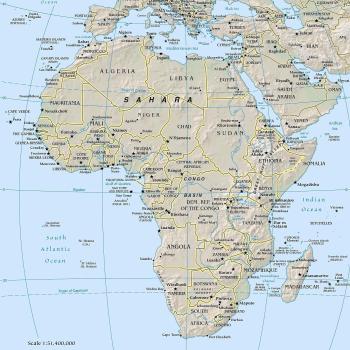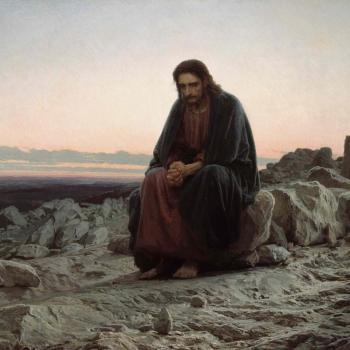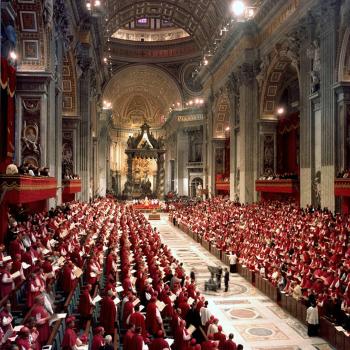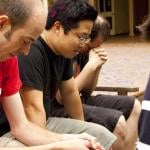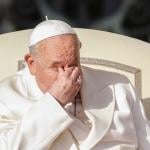We are shortly to encounter a major landmark in the history of Christianity, and indeed of the world’s religions more generally. Within a couple of years, probably as early as 2026, the number of Roman Catholics in Africa will match that of Europe. (I am speaking of Catholics, not of Christians more generally). Thereafter, the African figure will surge ahead of the European.
Let me repeat that statement.
By about 2026, there will be as many Catholics in Africa as in Europe.
How you react to that statement is largely a generational thing. If you are under forty, then just possibly, you are perhaps not so surprised. You have grown up with plenty of media coverage about the growth of Global or World Christianity, which is a huge area of academic interest, and you heard about it in college courses. If you are older, you remember a time when any such statement would have seemed ludicrous. You remember when Europe was the past and present fortress of the faith, which had however established thriving offshoots in the Americas. Back in 1914, Hilaire Belloc notoriously proclaimed that “Europe is the Faith, and the Faith is Europe.”
But Africa? It is not too long since that Euro-American Catholics, however well-meaning, still thought of African faith in terms of missions and of white missionaries. Maybe someday, this would change, but – to that degree? And by 2026?
When the next papal election arrives, probably within the next year or so, the media will be telling us a great deal about the shifting balance of power within the church, and most spectacularly in Africa. Today, I will show how we got to this stage.
Growing Africa
The basic story here is well known. Since the start of the twentieth century, Christian missions generally achieved widespread successes in Africa, and the churches they planted built massively on those original successes. At least as important was demographic change. Back in 1900, the African continent had around 120/140 million people, representing 9 percent of global population. Today the figure is over 1.5 billion, 18 percent of the whole. Continuing high fertility means that the African figure will grow steadily both in absolute and relative terms. By 2050, the figure should be 2.5 billion, or 25 percent of humanity.
Think through the religious consequences of all this. If a given denomination established itself in a particular corner of Africa in 1900, and if they merely held on to that market share over time, the raw number of its believers would have grown enormously by the 2020s – at least around twelvefold. That takes no account of subsequent evangelism and conversions.
Making Catholic Africa
Catholics illustrate this pattern sensationally, a point made just last month by the release of the church’s most recent Pontifical Yearbook and the Annuarium Statisticum Ecclesiae. The church’s global population is now 1.4 billion, of whom 27.4 percent live in South America, 20.4 percent in Europe, and 20 percent in Africa. Twenty percent? Viewed historically, that number is almost incredible. In 1900, the whole continent had only one or two million Catholics (again, that is Catholics, not Christians more generally). By 2026 or so, that Catholic number will be pushing 300 million.
Take a moment to contemplate a change on that scale.
From that original one or two million, the number grew to 130 million by the end of the century, and 200 million by 2015 or so. Just between 1980 and 2015, the total number of African Catholics grew by 238 per cent, and the rates have continued to boom. “The number of Catholics increased from 272 million in 2022 to 281 million in 2023, with a relative variation of +3.31%. The Democratic Republic of Congo confirms its first-place position for the number of baptized Catholics, with almost 55 million, followed by Nigeria with 35 million; Uganda, Tanzania, and Kenya also register significant figures.” In terms of the share of Africa’s continental population, Catholics represent a steady and slowly growing 18 percent.
As I said, Catholic Africa will very shortly overtake Europe, and at some point in the 2030s, it will surpass Latin America. To be clear, that is the whole of Latin America, including Mexico, Central America, and the Caribbean, and not just South America.
If current trends continue, as they show every sign of doing, then by the 2040s there will be at least 460 million African Catholics, a number greater than the total world population of Catholics as it stood back in 1950. By 2050, a half-billion or so Africans will constitute one third of Catholic believers. I wholeheartedly echo the words of that expert church-watcher, John L. Allen, that “Running the numbers, Africa isn’t the Catholic future – it’s the present.”
In 2015 African Catholic leaders prepared for a critical church Synod with documents published in a book that takes its ambitious title from a phrase of Pope Paul VI: Christ’s New Homeland.
Four Last Things
Some incidental comments arising from all this.
*Over the past quarter century, I have written a lot on related matters, and I have regularly offered projections of future numbers, of what the situation would be in 2015, 2025, and so on. On virtually every occasion, as it turns out, my predictions have fallen short of reality, and I have understated both Christian and specifically Catholic growth. That applies both generally, in terms of Catholic numbers worldwide, and in particular regions, above all Africa. For instance, I have long been saying that Catholic Africa would overtake Europe by 2030, which turns out to be a few years too late. I have little reason to doubt that my 2050 guesstimates will fall equally short.
*All the African figures I offer here fall short in one important regard, namely in ignoring modern-day African diasporas. By that, I do not mean the historical legacy of the slave trade, but the modern and continuing movements of Nigerians and Ghanaians to Britain or Germany, Madagascans and Congolese to France and Belgium, and so on. Many of these are faithfully Catholic, but in the statistics, their place of current residence identifies them as Europeans rather than Africans. If we count these “closet Africans,” then the population balance already shifts even more heavily to Africa than Europe.
*I casually drop figures in the hundreds of millions as the standard parlance of religious statistics, but do place them in interfaith context. Assume for example that we just look at the Catholics of Africa, omitting the rest of the Catholic world. Presently, as I said, there are around 300 million such believers, potentially rising to a half billion by 2050 or so. Just as an intellectual exercise, let us think of those African Catholics alone as a freestanding world faith, detached from Christianity. They would be the world’s third or fourth religion, exceeded only by Islam and Hinduism, and running only a little behind Buddhists. Presently, there are around a half billion Buddhists, and the number is shrinking, so by 2050 they would be at fair parity with African Catholics. Of course, nobody is suggesting such an African secession, but I just stress the numbers, which truly are very impressive.
*When we consider those African statistics alone, any suggestion of the Catholic Church “dying” or even stagnating is so wildly inaccurate as to be comical. This is not the first time that at least some observers have felt that prospects for the Church were so dismal. Back in the 1890s, Mark Twain sagely observed that: “In this world we have seen the Roman Catholic power dying … for many centuries. Many a time we have gotten all ready for the funeral and found it postponed again, on account of the weather or something … Apparently one of the most uncertain things in the world is the funeral of a religion.” See you at the graveside?
I think I am hearing distant voices of bygone African Christians, including Tertullian and Augustine, Felicity and Perpetua. They are cheering loudly.
At this point, you might rightly be saying that this new Catholic Africa has many problems and conflicts that demand discussion, and I agree wholeheartedly. See my next post.
From a large literature, I would recommend Stan Chu Ilo, Handbook of African Catholicism (New York: Orbis, 2022).









